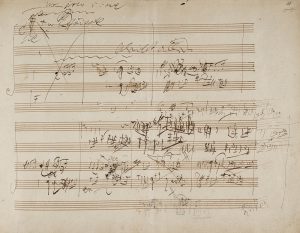A concept of “I” – the role of the “apparent tonic” in Schenkerian analysis
Prof. Dres Schiltknecht
Mannheim University of Music and Performing Arts
Lausanne, 3 May 2023
09:30 – 12:30
Room BC410

The present approach to Schenkerian analysis deals with a theory-immanent conflict and its constructive consequences emerging from a deeper examination of certain “pre-musical” material properties: The so called apparent tonic and the associated problem of the “unsupported stretch” are well-known terms from Schenkerian theory, nevertheless remaining of minor significance. As I want to show, these terms refer to a material-inherent conflict, which precisely for this reason cannot be rectified by individual “solutions” – on a case-by-case basis, so to speak.
In the first place, it is my listening experience that raises the awareness of an existing conflict: In countless Schenkerian analysis, a close interpretation of the graphing reveals an incoherence with my listening experience of the “upcoming conclusion”. In other words, the feeling I experience when the music is heading towards its completion has no consistent correlation in these graphs, which is quite surprising for an analytical approach whose core element is the “movement towards a goal“ (Schachter). It turns out that it is not a question of individual discrepancies in certain graphs, but of a general “conflict-property” of the Schenkerian Ursatz. In support of this thesis, we will analyse texts and analytical graphs from the Schenkerian community and Schenker himself. Finally, our investigation will lead to the following constructive consequences: The “apparent”, or better “dynamic“ tonic establishes a third tonic category along with the “beginning”- and “ending”-tonic. In association, the function of the subdominant is of fundamental importance (in opposition to Schenker’s own theory). This leads to a close relationship between Schenker’s and the Riemann’s early ideas of “structural functions”. Ultimately, the apparent tonic can be interpreted as an elementary insignia of the historically emerging ambivalence between sound as such and its function in context.